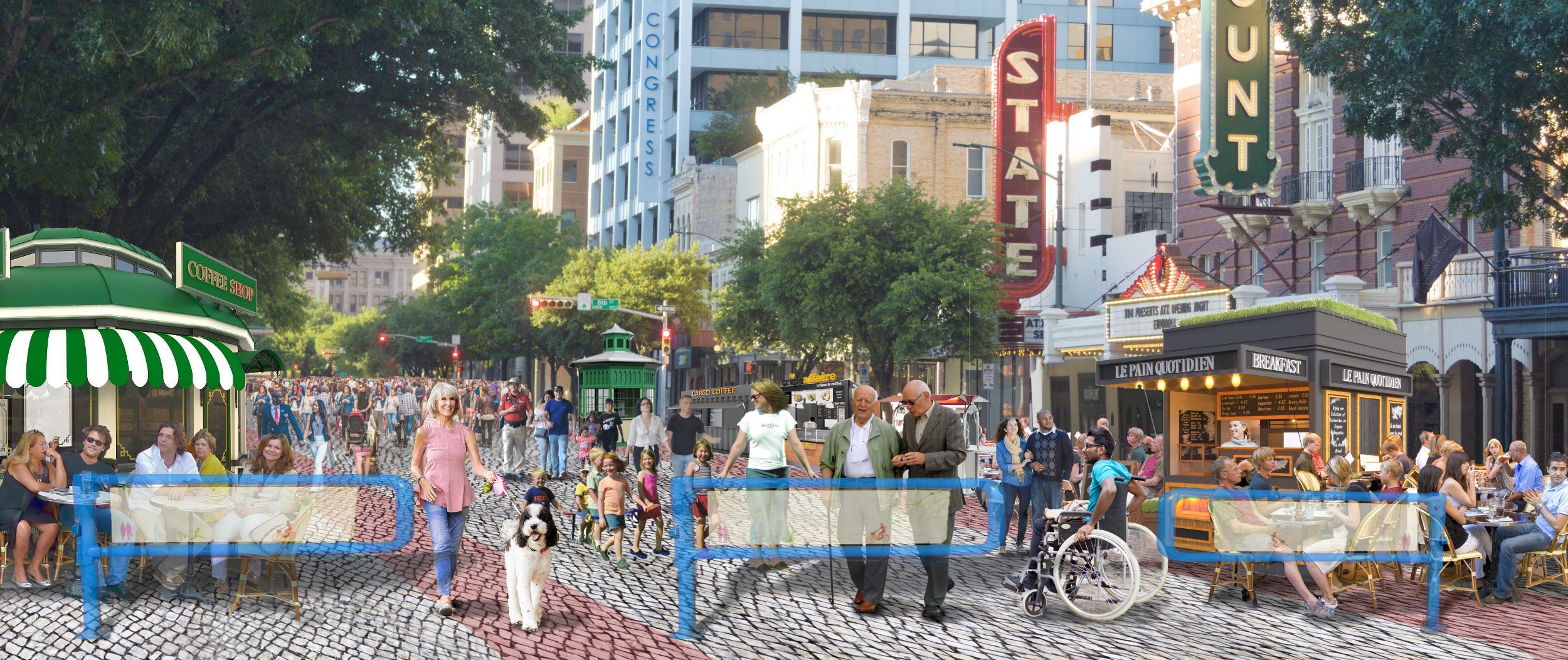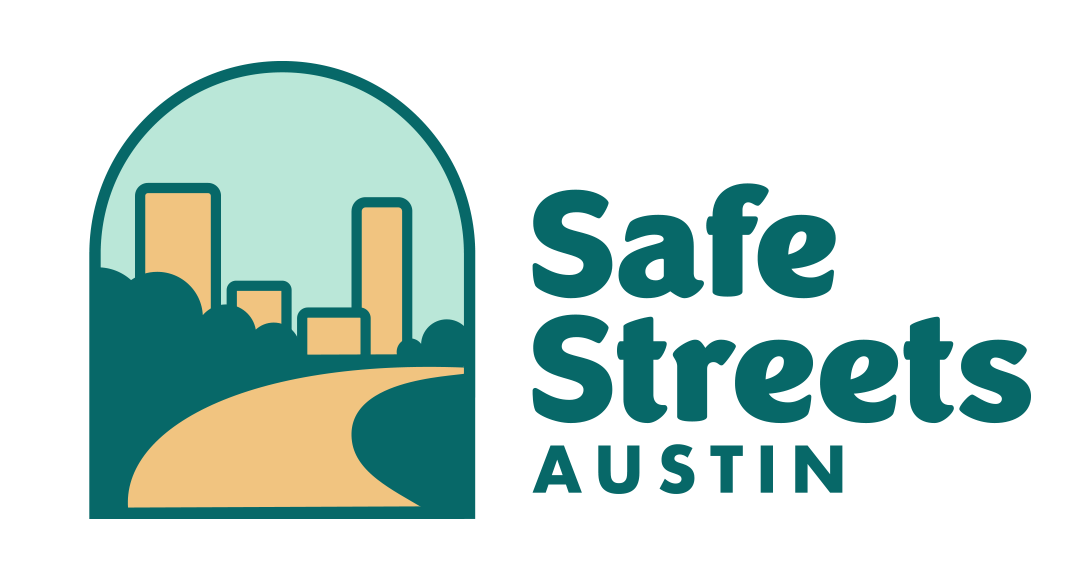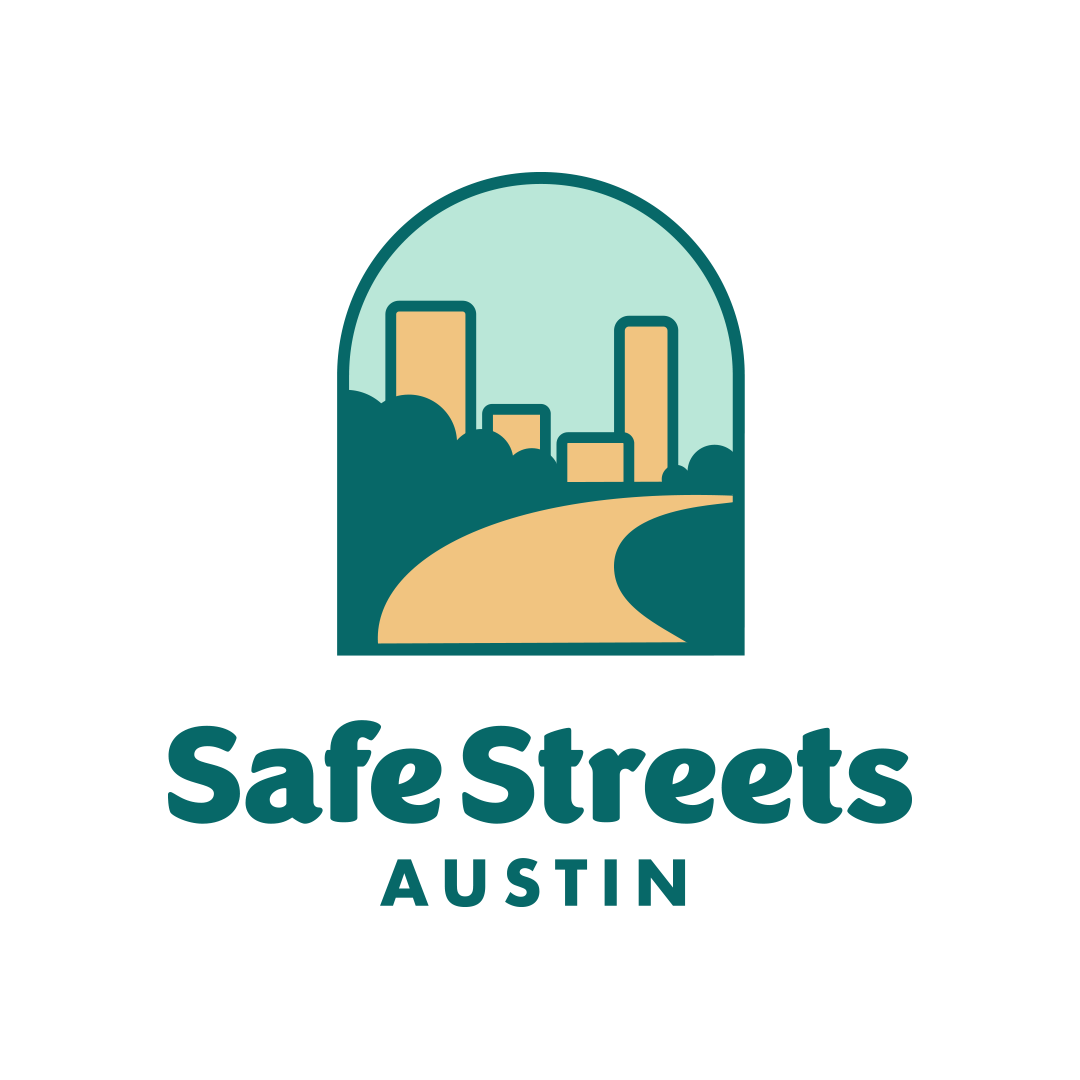
Congress For All Frequently Asked Questions
What part of Congress does Congress For All apply to?
Why adopt Congress For All rather than the City’s plan?
Who will occupy the sidewalk vendor spaces?
Can you explain more about the features of a pop up plaza?
Why will a pedestrian mall work well on Congress?
Won’t fewer vehicle lanes on Congress increase congestion?
How will wide sidewalks, vendor kiosks, and bike lanes replacing parking impact businesses?
What about parking for deliveries and for people with disabilities?
Won’t summer heat prevent Congress being visited by enough people?
1. What part of Congress does Congress For All apply to?
The geographical area is Congress Avenue between Riverside Drive and 11th Street at the State Capitol. These are the same boundaries that the City’s plan (the Congress Avenue Urban Design Initiative) uses.
2. Why adopt Congress For All rather than the City’s plan?
While the City’s plan (the Congress Avenue Urban Design Initiative) would be a step forward, Austin is ready for much more. Specifically:
i. Austinites are ready for a bolder plan. Austinites have embraced big visions in recent years, including overwhelming public support for historic transportation funding in 2020. The City’s Congress Avenue plan is almost exactly the same as it was in 2019 and needs updating.
ii. The City’s plan should extend the pop up plaza design to the Paramount Theater block. City staff have proposed a pop up plaza between 8th and 11th Street, but the Paramount Theater block between 7th and 8th must be included.
iii. The City’s plan should provide more pedestrian space on the iconic Congress Avenue Bridge. Bat-watching is one of Austin’s biggest tourist draws. The City’s plan provides no more space for this important attraction than is available today.
iv. The City’s plan should integrate Congress For All’s recommendations. Many local businesses, organizations, and City of Austin boards and commissions support Congress For All but the City’s plan has barely changed in response.
v. The City’s plan should treat Congress as a destination, rather than a drive-through. There needs to be more space for walking, sitting, bicycling, and sidewalk vendors.
-
Amenity/vendor area: 12 ft (City plan: 8 ft)
Standard vendor booths are often 12 ft deep. 8 ft is smaller than even the standard 10x10 ft canopy.Bike lanes: 10 ft (City plan: 6.5 ft)
New York City's new bike lanes on high demand streets are 10 ft wide.Storefront area: 10 ft (City plan: 8.5 ft)
Given the average space needed for outdoor dining and other activities, 10 ft would better meet local businesses' needs.Walking area: 11 ft (City plan: 9.5 ft)
The National Association of City Transportation Officials (NACTO), recommends that high pedestrian traffic areas have at least 8-12 feet of walking space to ensure smooth flow.Total space for all activities on each side of street: 45 ft (City plan: 34.5 ft)
(Includes 2 ft bike lane buffer for both proposals.)
3. Who will occupy the sidewalk kiosks?
There should be a community process to decide this. Preferential access could be considered for existing businesses on Congress Avenue and for local independent, minority, low-income, and/or LGBTQ-owned businesses. There could also be a targeted mix of vendors, work spaces, restrooms, and other uses.
4. Can you explain more about the features of a pop up plaza?
A pop up plaza, also known as a festival street, includes elements such as:
Always-present barriers at each end of every block: These allow the street to be closed quickly and easily. Options include gates and retractable bollards.
Roadway and sidewalks on one level: This means more usable space, easier pedestrian crossing, and better connections to businesses during events.
Something protecting the pedestrian areas and bike lanes from traffic: This could be bollards, concrete blocks, or something else.
Special pavement: This encourages slower vehicle speeds and signifies a different street environment.
5. Why will a pedestrian mall work well on Congress?
Congress For All proposes a pop-up plaza design to allow a car-free space to be tested first before committing to it. The experiment could start with short events lasting a few days and work up to longer events. If those longer events work then one day the gates could just stay closed and we’d have a car-free Congress.
6. Won’t fewer vehicle lanes on Congress increase congestion?
Almost certainly not. Roadways with one lane in each direction and a center turn lane carry as much traffic as two lanes (the general number on Congress) in each direction. This is because automobiles attempting to turn left cause a lot of congestion. A center turn lane addresses congestion caused by turning vehicles and makes up for the fewer number of vehicle lanes.
7. How will wide sidewalks, vendor kiosks, and bike lanes replacing parking impact businesses?
Making Congress more of a destination through wider sidewalks, kiosks, and so on, will almost certainly attract far more people to businesses than a small amount of parking.
Studies show that the street vibrancy and profits that restaurant seating and other activities generate are more beneficial to businesses than parking. The 120 parking spaces on Congress (less than 0.2% of all parking downtown) could easily be gained back, if desired, by better utilizing existing nearby parking.
8. What about parking for deliveries and for people with disabilities?
Alleys running parallel to Congress are already set up for deliveries. For people with disabilities, the City legally has to provide parking on nearby streets.
9. Won’t summer heat prevent Congress being visited by enough people?
Cities around the world with successful people-centric streets get hot too but still attract people through shade, drinking fountains, water misters, and other strategies.
Have all your questions been answered? Now take the next step.









